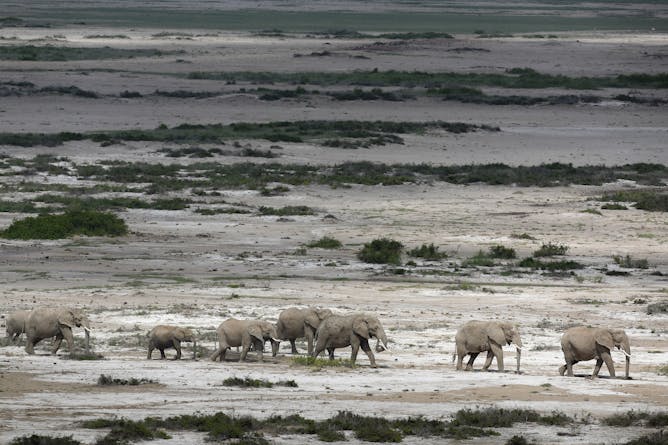|
Monday May 21 has been earmarked to celebrate biodiversity on the planet. In Africa, a major challenge is how to protect the continent’s dwindling elephant populations. There’s little consensus on how to bring the trade in ivory under control. Some argue that only a full ban can do the trick. Others that allowing some trade is the way to go. Katarzyna Nowak, Benezeth Mutayoba, Phyllis Lee and Ross Harvey offer a way forward that could help the two opposing camps find one another.
And, Gareth Dorrian and Ian Whittaker explain why it is important that scholars communicate on their research while climato-sceptics thrive, even though they keep on contradicting each other.
|

Conservationists are at loggerheads about how to save elephants from poaching.
EPA/Dai Kurokawa
Katarzyna Nowak, Durham University; Benezeth Mutayoba, Sokoine University of Agriculture; Phyllis Lee, University of Stirling; Ross Harvey, South African Institute of International Affairs
Improving livelihoods by exploring alternatives to wildlife trade would help to curb the poaching of threatened species like elephants.
|
Environment + Energy
|
-
Gareth Dorrian, Nottingham Trent University; Ian Whittaker, Nottingham Trent University
Conspiracy theorists have an à la carte attitude to data and trust, so what can scientists do about it?
|
|
Politics + Society
|
-
Jieun Lee, Korea University
Female teachers can act as role models who enhance girls’ motivation and learning outcomes.
-
Agus Mutohar, Monash University
Identifying three types of schools that are prone to radical values.
|
|
Arts + Culture
|
-
Louise D'Arcens, Macquarie University
In the 1850s, the women's dress reform movement advocated for a return to medieval design. The practice continues today.
|
|
Science + Technology
|
-
Sean Ulm, James Cook University; Alan Cooper, University of Adelaide; Michael Bird, James Cook University; Peter Veth, University of Western Australia; Robin Beaman, James Cook University; Scott Condie, CSIRO
The first people to make it to Australia could have navigated their way by sea crossing, reaching the north-west coastline of the island continent more than 50,000 years ago.
-
Gaokgatlhe Mirriam Tawane, Ditsong Museums of South Africa
Museums might look dull and old from the outside, but they house a wealth of knowledge that we cannot afford to lose.
|
|